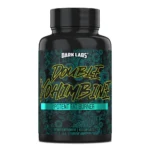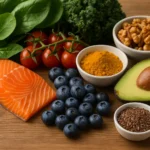In recent years, there has been a growing trend towards dairy-free diets in the fitness community. Whether due to lactose intolerance, ethical reasons, or health concerns, many fitness enthusiasts are exploring the benefits of a dairy-free lifestyle. This 500-word article delves into the intersection of fitness and dairy-free diets, examining the potential benefits, challenges, and nutritional considerations for those looking to maintain or enhance their physical fitness while avoiding dairy products.

Content
Understanding Dairy-Free Diet and Fitness:
A dairy-free diet excludes milk and milk products, including cheese, yogurt, and butter. People choose this diet for various reasons, including lactose intolerance, allergies, ethical concerns about animal welfare, or a desire to reduce inflammation and improve digestion.
Nutritional Considerations:
One of the main concerns with a dairy-free diet is getting enough calcium and vitamin D, nutrients that are abundant in dairy products. However, these can be sourced from other foods like leafy green vegetables, fortified plant-based milks, and supplements. Protein, another key nutrient found in dairy, is also vital for muscle repair and can be obtained from plant-based sources such as beans, lentils, tofu, and nuts.
Benefits for Fitness Enthusiasts:
Many fitness enthusiasts report feeling lighter and experiencing less bloating on a dairy-free diet, which can positively impact training and performance. Additionally, dairy-free diets can lead to decreased inflammation in some individuals, enhancing recovery and overall health.
Challenges and Adaptations:
The transition to a dairy-free diet requires careful planning to ensure nutritional needs are met. This includes finding alternative sources for calcium, vitamin D, and protein. Reading labels and being aware of hidden dairy in products is also crucial. Athletes and fitness enthusiasts may need to work with a nutritionist to ensure their diet supports their energy and performance needs.
Sample Dairy-Free Meal Plan for Athletes:
A well-balanced dairy-free diet for an athlete might include:
- Breakfast: Oatmeal with almond milk, berries, and nuts.
- Lunch: Quinoa salad with chickpeas, avocado, and a variety of vegetables.
- Dinner: Grilled tofu or tempeh with stir-fried vegetables and brown rice.
- Snacks: Fruit, nut butter, and dairy-free protein shakes.
- Impact on Gut Health and Energy Levels:
- Adopting a dairy-free diet can have a positive impact on gut health, which is crucial for athletes and fitness enthusiasts. Many people find that eliminating dairy reduces gastrointestinal discomfort and improves digestion, leading to better energy utilization and endurance in workouts.
- Tailoring a Dairy-Free Diet for Muscle Building:
- For those focused on muscle building, a dairy-free diet requires careful planning to ensure adequate protein intake for muscle repair and growth. Plant-based protein sources, such as soy, peas, and rice protein, can effectively replace whey and casein found in dairy. Additionally, incorporating a variety of plant-based foods ensures a well-rounded intake of essential amino acids.
Conclusion:
A dairy-free diet can be a healthy choice for fitness enthusiasts, offering potential benefits like reduced inflammation and improved digestion. However, it requires careful planning to ensure nutritional balance, especially for athletes and those with high physical demands. With the right approach, a dairy-free diet can support and even enhance fitness goals.

Arlene Ross is a health blogger who enjoys writing on her website. Arlene has always had an interest in medicine, and she hopes to become a doctor one day. She loves reading about medical discoveries, especially when they are for rare conditions that don’t have much research yet. She also likes exploring the science behind different diets and nutrition programs.












